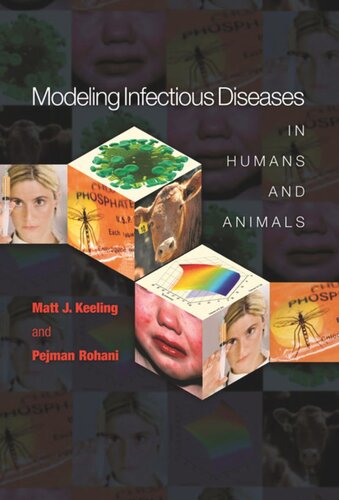

Most ebook files are in PDF format, so you can easily read them using various software such as Foxit Reader or directly on the Google Chrome browser.
Some ebook files are released by publishers in other formats such as .awz, .mobi, .epub, .fb2, etc. You may need to install specific software to read these formats on mobile/PC, such as Calibre.
Please read the tutorial at this link: https://ebookbell.com/faq
We offer FREE conversion to the popular formats you request; however, this may take some time. Therefore, right after payment, please email us, and we will try to provide the service as quickly as possible.
For some exceptional file formats or broken links (if any), please refrain from opening any disputes. Instead, email us first, and we will try to assist within a maximum of 6 hours.
EbookBell Team

5.0
48 reviewsFor epidemiologists, evolutionary biologists, and health-care professionals, real-time and predictive modeling of infectious disease is of growing importance. This book provides a timely and comprehensive introduction to the modeling of infectious diseases in humans and animals, focusing on recent developments as well as more traditional approaches.
Matt Keeling and Pejman Rohani move from modeling with simple differential equations to more recent, complex models, where spatial structure, seasonal "forcing," or stochasticity influence the dynamics, and where computer simulation needs to be used to generate theory. In each of the eight chapters, they deal with a specific modeling approach or set of techniques designed to capture a particular biological factor. They illustrate the methodology used with examples from recent research literature on human and infectious disease modeling, showing how such techniques can be used in practice. Diseases considered include BSE, foot-and-mouth, HIV, measles, rubella, smallpox, and West Nile virus, among others. Particular attention is given throughout the book to the development of practical models, useful both as predictive tools and as a means to understand fundamental epidemiological processes. To emphasize this approach, the last chapter is dedicated to modeling and understanding the control of diseases through vaccination, quarantine, or culling.